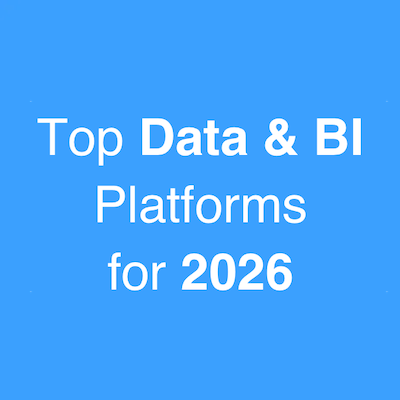Learn about the best practices for implementing sophisticated data models in-house.
Supply chain 4.0 is reshaping the global value chains. Advanced technologies like the Internet of Things (IoT), big data analytics, and autonomous robotics are transforming the model of supply chain management. Data is being produced, collected, analyzed, and productized at speeds and scales which were unimaginable a decade ago.
The race to capitalize on the value of supply chain 4.0 is on.
According to the 2020 MHI Annual Industry Report by Deloitte, less than a third of supply chain and logistic companies are using predictive analytics today. But in less than 5 years, this number is set to quadruple.
In the race to the top, companies have to move fast to grab land in this the winner-takes-all market.
Here we dive deeper behind supply chain predictive analytics: its use cases, hurdles that prevent companies from using advanced analytics, and best practices when implementing sophisticated data models in-house.
1. The use cases of supply chain predictive analytics
The Nobel laureate Niels Bohr had famously joked:
“It is difficult to make predictions, especially about the future.”
And there is some truth to it. Predictive analytics is notoriously hard.
Or so it was. With the advent of more advanced machine learning and artificial intelligence (AI) algorithms, it has become easier to look at historical data and make predictions about how the world will look in the future.
Supply chain predictive analytics has a proven track record to anticipate trends and offer insights about what is to come. Below we look at some prominent use cases of supply chain predictive analytics.
1. Anticipatory shipping. Freight tracking has been all the rage in the late 2000s. Cargo was equipped with sensors that emit real-time data and allow you and your customers to track the shipment’s location in real-time. Today, the name of the game is anticipatory shipping. Amazon is already predicting what customers will order before the customers even click “add to cart”. The logistics giant uses these predictions to ship items to warehouses closer to the customers before their order is placed. Once the customer swipes their credit card, the item is close by, and shipping to the customer’s address takes almost no time. This is what allows the tech giant to deliver items in less than 1 hour and delight their customers.
2. Demand forecasting. Customers’ demand can be fickle. It follows seasonality trends as well as changes in the pricing on the market. However, historical data can help you bridge the gap between your insights and accurate forecasting by building demand forecast models. Statistical models allow you to better anticipate the rise and fall in demand and negotiate with your suppliers and distributors accordingly. This gives you a better understanding of the future business as well as allows you to put your budget to better use.
3. Inventory management. Unexpected freight at rest can incur extra costs. If you are in the business of perishable goods logistics or are contractually bound by penalties upon missing delivery deadlines, inventory mismanagement can cut into your margins and bleed your reserves. Supply chain predictive analytics is focused on inventory optimization. By taking the timing constraints as input parameters, the model determines the optimal order of item storage and shipping, according to your FIFO or LIFO policies.
4. Predictive maintenance. A machine breaking in the supply chain incurs repairing costs, but also causes unnecessary business interruptions. Companies can guard against this technical downtime by relying on multiple fallback machines. But this comes at the tradeoff of higher investment into the technological infrastructure. With the rise of IoT, machines are equipped with sensors that automatically track and monitor the machinery’s parts and states. Sensors by themselves can warn us of forthcoming malfunctions (e.g. a component overheating over the manufacturer’s threshold might indicate it will soon break). Adding machine learning algorithms on top of sensor data, allows us to use the past patterns to anticipate breakage. For example, we might find out that a combination of process X slowdown with an overheating in component Y is highly predictive of imminent troubles. Hence, predictive analytics can warn us, and we can replace the necessary parts instead of the entire machine even before it breaks.
2. The challenges of implementing supply chain analytics
There are multiple challenges the supply chain industry needs to overcome if it wants to build a system with high forecast accuracy:
- Data is dispersed and hard to access. Supply chain and logistic companies have a myriad of data sources: distributor reports, warehouse slips, ERP data, SCM software data, financial data, … Oftentimes the data is in different formats: from Excel spreadsheets to physical warehousing notes on where the inventory is. This data dispersion makes it hard to build statistical models that look at patterns to build predictive supply chain models.
- Raw data is of low quality and needs to be cleaned. The quality of predictions depends on the quality of the data we feed the predictive algorithms with. Unfortunately, a lot of data is unusable without some hard cleaning. From standardizing differently-named fields into a common terminology, linking the same item ID across different departments, to digitalizing handwritten notes, companies need to put in the necessary work to make the data usable for a predictive analytics system.
- The “set-it-and-forget-it” assumption misses the target. Unlike descriptive analytics, which looks at the past, predictive analytics looks at the future. And the future is constantly changing. The best predictive models take that into account and adjust their predictions as new data comes in. Supply chain companies need to adopt a different mentality if they want to move from business insights that look at a fixed past, to big data analytics that looks at an ever-evolving future. This means more dynamic decision-making and agility when responding to market changes, as well as more robust data engineering systems, which can handle new incoming data and fast analyses without breaking.
3. How to start with supply chain predictive analytics?
There are five main steps when implementing supply chain predictive analytics:
- Gather all the data in one place.
- Clean the data. Remove unnecessary information and drop corrupted data files. Standardize all the data across different reporting systems, and link and integrate data across different sources.
- Build predictive models. Use advanced machine learning and artificial intelligence approaches to better forecast the dynamics of the supply chain.
- Talk to managers to understand the nuances of the predictions and their impact on business operations, and cooperate side-by-side with decision-makers as predictions change in response to changes on the market.
- Build an end-to-end system that can handle all the four points above without crashing when new data is introduced.
Keboola can help you along the path of better forecasting.
Keboola is a data platform, which offers logistics and supply chain companies end-to-end predictive analytics:
- Connect all your varying sources of data with a couple of clicks. From CRMs, financial software, to manual CSV file uploads, Keboola acts as a universal integrator for all incoming data.
- Clean your data and automate the process. Keboola offers easy-to-use tools to clean your data, but also to automate the process. So you can actually set-it-and-forget-it: once you establish the procedures necessary to output clean and validated data, you can let the machines repeat the process, so you won’t have to manually clean it every time.
- Centralize your data across your business operations. By integrating into multiple databases, data lakes, and even just uploading your data to the destination of your choice, Keboola allows you to create a unified data core, accessible to all the necessary parties.
- Integrate your data with data science tools. From sandboxes to machine learning libraries, you can prototype and build your machine learning models within Keboola, to tap into the potential of predictive analytics. The integrated tools allow you to experiment faster and build models at unprecedented speeds.
And that is just the tip of the iceberg. Keboola is built with state-of-the-art scalability options, so it grows with your business. It also fortifies your operations with best-in-class security and allows collaboration across departments.
Curious about how Keboola can help you set up logistics analytics for success? Let’s jump on a call.
Subscribe to our newsletter
Have our newsletter delivered to your inbox.




.png)




